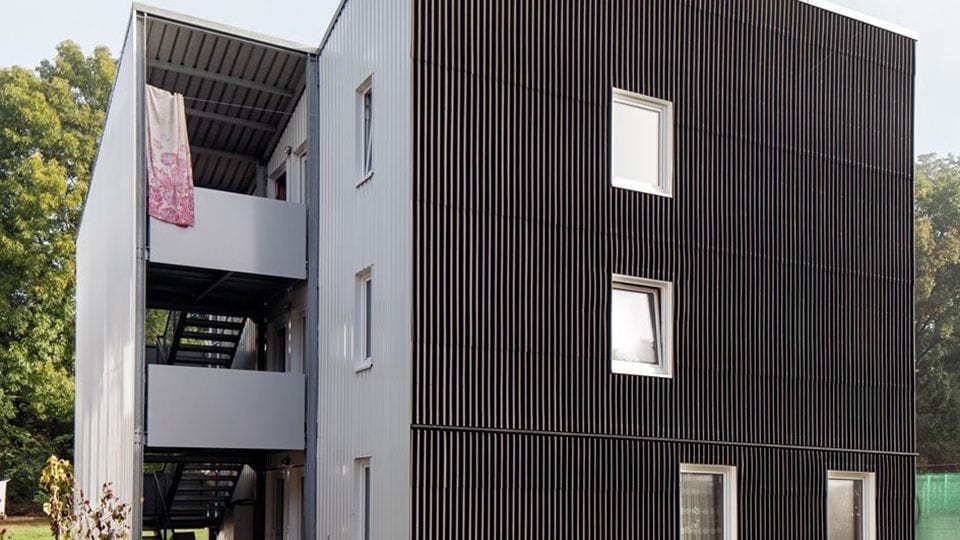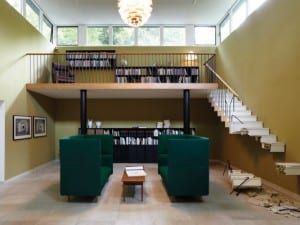Following the great wave of refugees who arrived in Germany in 2015 (close to 900,000), around 300,000 still live in emergency accommodation such as air domes or high school gyms. With such an influx of people, the need for affordable housing in metropolitan areas was urgent and prompted architects, urban planners and cities to produce suitable and sustainable lodging. Making Heimat, Germany. Arrival Country | Atlas of Refugee Housing from Hatje Cantz takes stock of the various types of housing available in German arrival cities, expanding on the Deutsches Architekturmuseum‘s archive of the shifting urban landscape, in one volume.
A continuation of the museum’s contribution to the 2016 Venice Architecture Biennial and its accompanying catalogue, Atlas of Refugee Housing is an up-to-date inventory of housing projects which have been completed and are currently being finalised. Within the Biennial exhibition, the museum explored the conditions for successful integration. The original catalogue, Making Heimat, Germany. Arrival Country, drew international recognition and encouraged DAM director Peter Cachola Schmal, along with Oliver Elser and Anna Scheuermann, to pursue their research into urban development as a key factor in successful integration: makingheimat.de is a prime example of this. The website catalogues the progress of refugee housing on an ongoing basis.
Making Heimat, Germany. Arrival Country | Atlas of Refugee Housing, is a second, independent publication that closely examines the changes that have occurred in society and politics since October 2015. A current inventory, it features a selection of 57 buildings throughout the entire country that are used for housing refugees. The publication is not a collection of ‘best practices’, but an image of reality. Successfully implemented, universal model projects, such as the roofing of a parking lot in Munich, are presented, as well as regional specifics, such as the ‘Kassel model’, with its team of local architects that design large-scale building projects that can be repurposed afterwards.
In addition, the rescheduling, downscaling and elimination of outstanding projects has been documented. The Biennial exhibition, along with updated and expanded themes and a retrospective of Venice, can be seen until 10 September at the Deutsches Architekturmuseum in Frankfurt.
Making Heimat, Germany. Arrival Country | Atlas of Refugee Housing, published by Hatje Cantz, is now available.
For more information, visit www.hatjecantz.de.
For the latest news in contemporary art and culture, follow us on Facebook, Twitter and Instagram.
Credits
1. Refugee Housing Project. Copyright Anja Weber. www.makingheimat.de.





